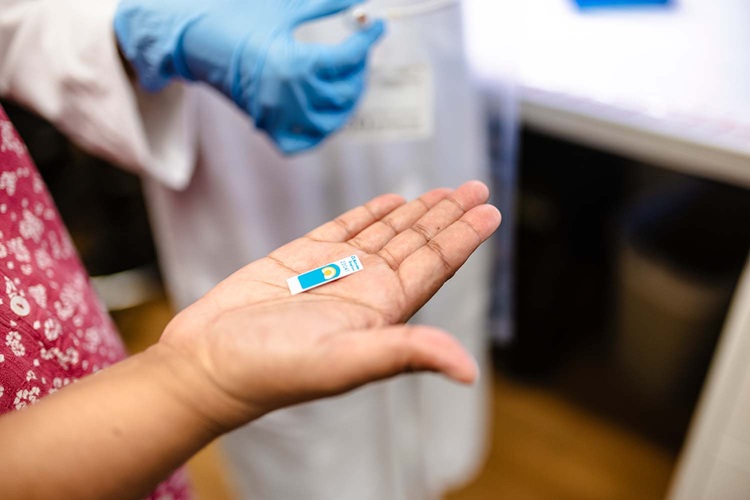Blood Bank NAT-Based Assay Prevents Transfusion-Transmitted Malaria
|
By LabMedica International staff writers Posted on 20 Aug 2020 |
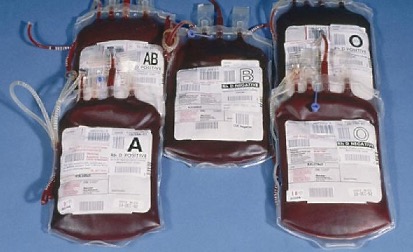
Nucleic acid amplification testing-based assay (NAT) improves the surveillance system and prevent transfusion-transmitted malaria in blood banks (Photo courtesy of University of Cambridge).
Blood transfusion is an essential component of health care, which saves millions of lives across the world. The screening of blood donors for transfusion-transmissible agents is crucial in reducing risks of transfusion of infected units.
Malaria can also be transmitted by blood components, and transfusion-transmitted malaria (TTM) cases, although rare, continue to pose a risk to blood services worldwide. TTM is an important public health problem, especially in populations with no immunity to malaria where it can be fatal if not recognized and treated quickly.
Immunobiologists at the Oswaldo Cruz Foundation (Rio de Janeiro, Brazil) used a panel of positive and negative samples for the validation of the human immunodeficiency virus type 1 (HIV), hepatitis C virus (HCV), hepatitis B virus (HBV) and malaria nucleic acid amplification test (NAT). The panel consisted of 1,800 negative samples (whole blood and plasma), 16 positive samples (whole blood and plasma) from another laboratory and 31 positive samples from the Malaria Research Laboratory. Malaria diagnosis was performed by microscopy and evaluated by an experienced microscopist.
Two different automated nucleic acid isolation workstations were tested to investigate which technology would provide better results in detecting Plasmodium sp. gene target using plasma samples. The HIV/HCV/HBV/malaria NAT prototype (Bio-Manguinhos, Rio de Janeiro, Brazil) is a real-time nucleic acid amplification multiplex developed to be incorporated into the Brazilian NAT platform to detect HIV, HCV, and HBV. To check the performance and feasibility in a real-life blood bank scenario, the prototype HIV/HCV/HBV/malaria NAT assay was tested on 4,745 blood-donor specimens. DNA was amplified on an Applied Biosystems 7500 Real-Time PCR System (Thermo Fisher Scientific, Waltham, MA, USA).
The scientists reported that the specificity of the prototype NAT assay, 1,800 truly negative samples were tested and no false positive signal was identified in the malaria amplification module. This finding confirms the high specificity of the prototype HIV/HCV/HBV/malaria NAT assay for the malaria target. The analysis of 47 truly positive samples and 1,800 truly negative samples revealed a specificity of 99.8%‒100%, a sensitivity of 92.5%‒100%, and an accuracy of 99.8%‒100%. Of the 4,745 plasma samples tested, three donors showed a positive signal on PCR to the malaria probe (prevalence of 0.06%) and their blood units were discarded.
The authors concluded that The HIV/HCV/HBV/malaria NAT assay is an easy and fast screening method that takes advantage of a platform currently in use as part of the blood bank routine and which has been effective for improving blood transfusion safety. The study was published on July 31, 2020 in the Malaria Journal.
Related Links:
Oswaldo Cruz Foundation
Bio-Manguinhos
Thermo Fisher Scientific
Malaria can also be transmitted by blood components, and transfusion-transmitted malaria (TTM) cases, although rare, continue to pose a risk to blood services worldwide. TTM is an important public health problem, especially in populations with no immunity to malaria where it can be fatal if not recognized and treated quickly.
Immunobiologists at the Oswaldo Cruz Foundation (Rio de Janeiro, Brazil) used a panel of positive and negative samples for the validation of the human immunodeficiency virus type 1 (HIV), hepatitis C virus (HCV), hepatitis B virus (HBV) and malaria nucleic acid amplification test (NAT). The panel consisted of 1,800 negative samples (whole blood and plasma), 16 positive samples (whole blood and plasma) from another laboratory and 31 positive samples from the Malaria Research Laboratory. Malaria diagnosis was performed by microscopy and evaluated by an experienced microscopist.
Two different automated nucleic acid isolation workstations were tested to investigate which technology would provide better results in detecting Plasmodium sp. gene target using plasma samples. The HIV/HCV/HBV/malaria NAT prototype (Bio-Manguinhos, Rio de Janeiro, Brazil) is a real-time nucleic acid amplification multiplex developed to be incorporated into the Brazilian NAT platform to detect HIV, HCV, and HBV. To check the performance and feasibility in a real-life blood bank scenario, the prototype HIV/HCV/HBV/malaria NAT assay was tested on 4,745 blood-donor specimens. DNA was amplified on an Applied Biosystems 7500 Real-Time PCR System (Thermo Fisher Scientific, Waltham, MA, USA).
The scientists reported that the specificity of the prototype NAT assay, 1,800 truly negative samples were tested and no false positive signal was identified in the malaria amplification module. This finding confirms the high specificity of the prototype HIV/HCV/HBV/malaria NAT assay for the malaria target. The analysis of 47 truly positive samples and 1,800 truly negative samples revealed a specificity of 99.8%‒100%, a sensitivity of 92.5%‒100%, and an accuracy of 99.8%‒100%. Of the 4,745 plasma samples tested, three donors showed a positive signal on PCR to the malaria probe (prevalence of 0.06%) and their blood units were discarded.
The authors concluded that The HIV/HCV/HBV/malaria NAT assay is an easy and fast screening method that takes advantage of a platform currently in use as part of the blood bank routine and which has been effective for improving blood transfusion safety. The study was published on July 31, 2020 in the Malaria Journal.
Related Links:
Oswaldo Cruz Foundation
Bio-Manguinhos
Thermo Fisher Scientific
Latest Hematology News
- MRD Tests Could Predict Survival in Leukemia Patients
- Platelet Activity Blood Test in Middle Age Could Identify Early Alzheimer’s Risk
- Microvesicles Measurement Could Detect Vascular Injury in Sickle Cell Disease Patients
- ADLM’s New Coagulation Testing Guidance to Improve Care for Patients on Blood Thinners
- Viscoelastic Testing Could Improve Treatment of Maternal Hemorrhage
- Pioneering Model Measures Radiation Exposure in Blood for Precise Cancer Treatments
- Platelets Could Improve Early and Minimally Invasive Detection of Cancer
- Portable and Disposable Device Obtains Platelet-Rich Plasma Without Complex Equipment
- Disposable Cartridge-Based Test Delivers Rapid and Accurate CBC Results
- First Point-of-Care Heparin Monitoring Test Provides Results in Under 15 Minutes

- New Scoring System Predicts Risk of Developing Cancer from Common Blood Disorder
- Non-Invasive Prenatal Test for Fetal RhD Status Demonstrates 100% Accuracy
- WBC Count Could Predict Severity of COVID-19 Symptoms
- New Platelet Counting Technology to Help Labs Prevent Diagnosis Errors
- Streamlined Approach to Testing for Heparin-Induced Thrombocytopenia Improves Diagnostic Accuracy
- POC Hemostasis System Could Help Prevent Maternal Deaths
Channels
Clinical Chemistry
view channel
POC Breath Diagnostic System to Detect Pneumonia-Causing Pathogens
Pseudomonas aeruginosa is a major cause of hospital-acquired and ventilator-associated pneumonia, particularly in lung transplant recipients and patients with structural lung disease. Its ability to form... Read more
Online Tool Detects Drug Exposure Directly from Patient Samples
Doctors often rely on patient interviews and medical records to determine what medications a person has taken, but this information is frequently incomplete. People may forget drugs they used, take over-the-counter... Read moreMolecular Diagnostics
view channel
STI Molecular Test Delivers Rapid POC Results for Treatment Guidance
An affordable, rapid molecular diagnostic for sexually transmitted infections (STIs) has the potential to be globally relevant, particularly in resource-limited settings where rapid, point-of-care results... Read more
Blood Biomarker Improves Early Brain Injury Prognosis After Cardiac Arrest
After a cardiac arrest, many patients remain unconscious for days, leaving doctors and families facing uncertainty about whether meaningful recovery is possible. Current tools to assess brain damage, including... Read more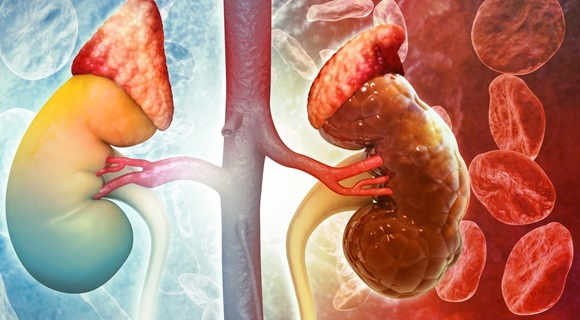
Biomarkers Could Identify Patients at High Risk of Severe AKI After Major Surgery
Acute kidney injury is one of the most common and dangerous complications after major surgery, particularly among patients in intensive care. Even mild impairment of kidney function can lead to long-term... Read more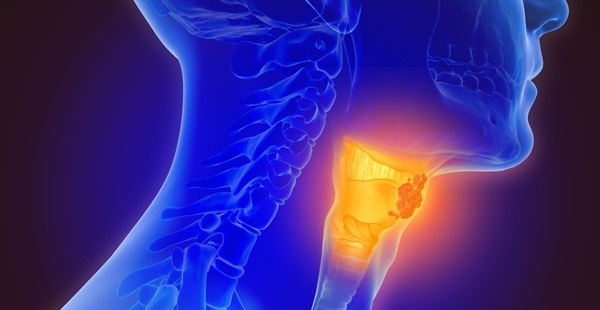
CLIA Test Identifies Head and Neck Cancer Recurrence from Post-Surgical Lymphatic Fluid
While the lymphatic system’s critical role in metastasis has long been recognized, routine access to patient lymph has been elusive. Now, a non-invasive process can access lymph through the collection... Read moreImmunology
view channel
Blood Test Could Identify Colon Cancer Patients to Benefit from NSAIDs
Colon cancer remains a major cause of cancer-related illness, with many patients facing relapse even after surgery and chemotherapy. Up to 40% of people with stage III disease experience recurrence, highlighting... Read moreBlood Test Could Detect Adverse Immunotherapy Effects
Immune checkpoint inhibitors have transformed cancer treatment, but they can also trigger serious immune-related adverse events that damage healthy organs and may become life-threatening if not detected early.... Read moreMicrobiology
view channel
Breakthroughs in Microbial Analysis to Enhance Disease Prediction
Microorganisms shape human health, ecosystems, and the planet’s climate, yet identifying them and understanding how they are related remains a major scientific challenge. Even with modern DNA sequencing,... Read more
Blood-Based Diagnostic Method Could Identify Pediatric LRTIs
Lower-respiratory tract infections (LRTIs) are a leading cause of illness and death worldwide, and pneumonia is the leading infectious cause of death in children under five, claiming the lives of over... Read morePathology
view channel
Rapid Low-Cost Tests Can Prevent Child Deaths from Contaminated Medicinal Syrups
Medicinal syrups contaminated with toxic chemicals have caused the deaths of hundreds of children worldwide, exposing a critical gap in how these products are tested before reaching patients.... Read more
Tumor Signals in Saliva and Blood Enable Non-Invasive Monitoring of Head and Neck Cancer
Head and neck cancers are among the most aggressive malignancies worldwide, with nearly 900,000 new cases diagnosed each year. Monitoring these cancers for recurrence or relapse typically relies on tissue... Read more
Common Health Issues Can Influence New Blood Tests for Alzheimer’s Disease
Blood-based tests for Alzheimer’s disease are transforming diagnosis by offering a simpler alternative to spinal taps and brain imaging. However, many people evaluated at memory clinics also live with... Read more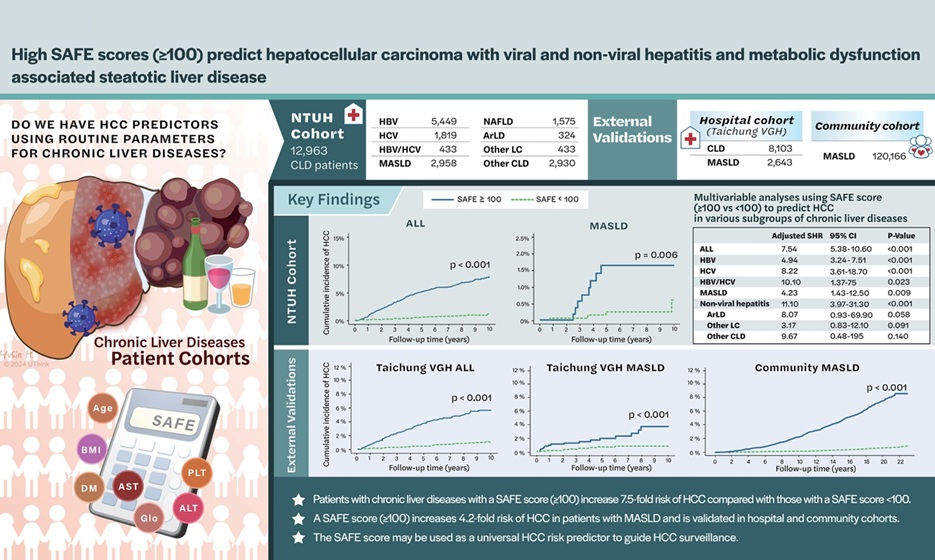
Blood Test Formula Identifies Chronic Liver Disease Patients with Higher Cancer Risk
Chronic liver disease affects millions worldwide and can progress silently to hepatocellular carcinoma (HCC), one of the deadliest cancers globally. While surveillance guidelines exist for patients with... Read moreTechnology
view channel
Machine Learning Models Diagnose ALS Earlier Through Blood Biomarkers
Amyotrophic lateral sclerosis (ALS) is a rapidly progressive neurodegenerative disease that is notoriously difficult to diagnose in its early stages. Early symptoms often overlap with other neurological... Read more
Artificial Intelligence Model Could Accelerate Rare Disease Diagnosis
Identifying which genetic variants actually cause disease remains one of the biggest challenges in genomic medicine. Each person carries tens of thousands of DNA changes, yet only a few meaningfully alter... Read moreIndustry
view channel
BD and Penn Institute Collaborate to Advance Immunotherapy through Flow Cytometry
BD (Becton, Dickinson and Company, Franklin Lakes, NJ, USA) has entered into a strategic collaboration with the Institute for Immunology and Immune Health (I3H, Philadelphia, PA, USA) at the University... Read more

















